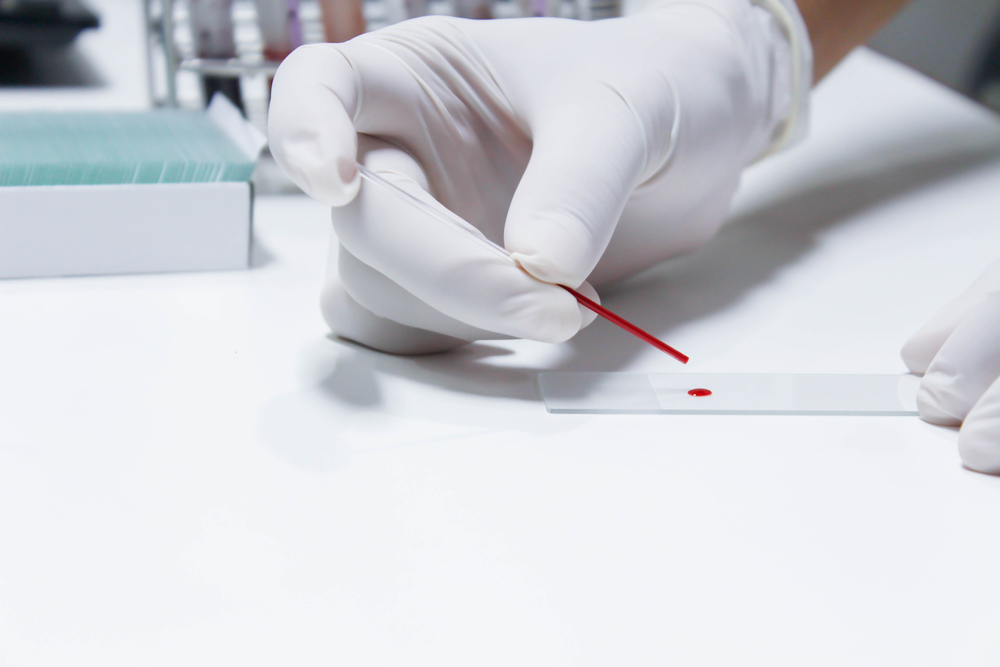New Biomarker Distinguishes Types of Angioedema, Study Finds

Researchers have developed a new way to distinguish bradykinin-mediated angioedema from histamine-mediated angioedema. This biomarker tool may improve the use of targeted therapies in angioedema patients.
The study, “Threshold‐Stimulated Kallikrein Activity Distinguishes Bradykinin‐ From Histamine‐Mediated Angioedema,” was published in Clinical & Experimental Allergy.
Angioedema encompasses several disorders characterized by swelling and the appearance of large welts on the body. The episodes can last for three or four days.
There are different types of angioedema, including some that are triggered suddenly as an allergic reaction (acute allergic angioedema), or caused by certain medications (non-allergic angioedema).
Other types are chronic and may be caused by a faulty gene (hereditary angioedema) or immune system (acquired angioedema), or even appear without a known reason (idiopathic angioedema).
Although hereditary angioedema (HAE) can be caused by mutations in different genes, they all converge into the same core issue — overproduction of bradykinin, a peptide that regulates blood pressure and inflammation by dilating blood vessels.
During an episode, bradykinin is activated in the deep layers of the skin, allowing fluid from the bloodstream to travel and accumulate in the skin and causing tissue swelling.
In normal conditions, a protein called C1-inhbitor (C1INH) blocks the activity of plasma kallikrein (an enzyme involved in blood clotting and inflammation) that promotes bradykinin production.
But when mutations occur in the gene encoding C1INH, the amount of C1INH available may not be sufficient to stop kallikrein, causing bradykinin levels to rise too high and cause an attack.
Although most forms of HAE have been associated with C1INH deficiency, in 2000 researchers described for the first time a new form of the disease with normal C1INH levels. Since most patients with this new form of the disease did not have a known mutation associated to it, the condition received the name of HAE-unknown (HAE-U).
Distinguishing patients with HAE-U from those with idiopathic non-histaminergic angioedema (INHA) — another form of the disease clinically similar to HAE, except that it lacks a clear family history — is technically challenging due to the lack of specific biomarkers for both conditions.
“The lack of an existing diagnostic test or biomarker for HAE-U or INHA has caused substantial difficulties for patients and physicians resulting in both the failure to treat patients with severe life-threatening angioedema with appropriate medications as well as inappropriate use of costly medications,” investigators said.
“The inability to establish an accurate diagnosis also severely hampers the ability to conduct genetic studies or therapeutic trials due to the non-homogeneity of the population,” they added.
In an effort to overcome this problem and develop a reliable biomarker that would facilitate the diagnosis of HAE-U and INHA, researchers collected blood samples from a total of 154 patients with high probability of having either HAE-U or INHA. They measured the activity of plasma kallikrein using the breakdown of a fluorescent substrate for the enzyme as a readout.
The activity of plasma kallikrein — measured by mean fluorescence of the substrate per minute — was significantly higher in samples from both HAE-U (1,804) and INHA (1,579) subjects compared to non-swelling controls (171), and individuals with histaminergic angioedema (133).
Histaminergic angioedema is caused by histamine — a molecule involved in allergic reactions — instead of bradykinin.
Moreover, this test allowed investigators to distinguish subjects with HAE-U and INHA from those with histaminergic angioedema with high sensitivity (86‐89%) and specificity (80‐100%).
Researchers considered this test is a feasible tool that has the potential to be used to distinguish bradykinin‐mediated angioedema from histamine-mediated angioedema in a clinical setting.
“We propose that the threshold-stimulated kallikrein assay [test] can be adapted for clinical use and may improve patient care while aiding future studies aimed at identifying specific causes of bradykinin-mediated angioedema,” they concluded.






